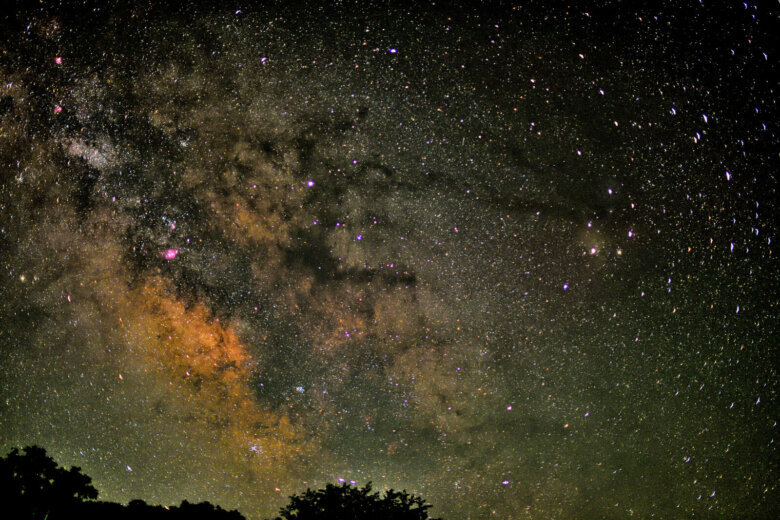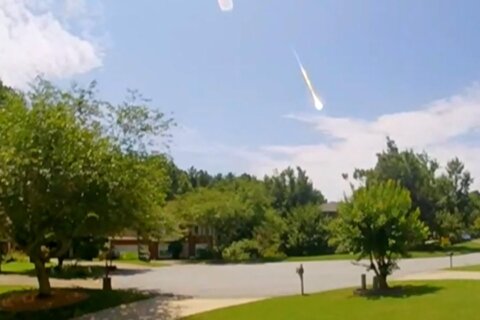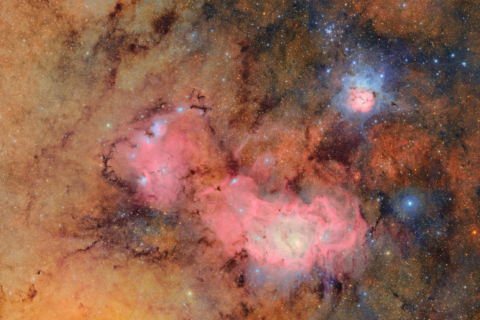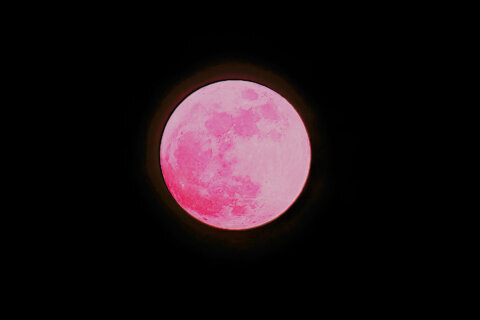“What’s up in the sky?” is a recurring feature and publishes on the first of every month. You can find it on WTOP’s The Space Place. Email Greg your space questions and he might answer them in the next edition.
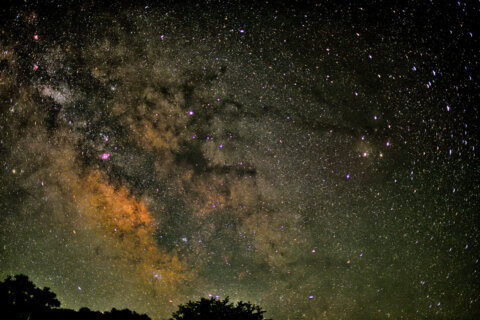
Welcome to WTOP’s monthly feature: “What’s up in the sky?” Each month it features the best the sky has to offer stargazers regarding the moon, planets and stars. Space-related events that might interest you taking place in the D.C. area are included as well.
Let’s get to the sky for July 2025!
Must-see sky sights for July
During July, Venus continues to be the “Morning Star” in the east before dawn, albeit it has become dimmer — but still bright — as it moves away from Earth. About halfway through the month, Jupiter becomes visible in the east before dawn to the far lower left of Venus.
The moon has some close pairings with stars and planets and will actually occult, or cover, some stars. Two meteor showers combine to put on a show and the Milky Way will steal July’s sky show.
Star of the Month: Antares
In July, in the southern sky after it gets dark, the impressive and ruby red colored star Antares easily catches our eyes and attention. And it should, as Antares marks the heart of Scorpius, the scorpion, one of the few constellations that actually looks like its namesake.
Last month, you were introduced to the bright blue-white Vega, the fourth brightest star in the night sky. It blazes high overhead in July and offers a nice color contrast to compare to Antares.
Highlight of the Month
As we go through July, each night in the southeast after it gets dark, our galaxy, the Milky Way rises. You need a dark sky site to see the Milky Way, and as July begins, the Milky Way is well up in the sky and climbs higher in the sky until dawn.
In late July, our galaxy is resplendent in the south and forms an arch in the sky toward the northeast. You can see the Milky Way with a smartphone and/or camera by taking time exposures and for best results using a tripod.
July 3: The star Spica and the one-day past first quarter moon form a nice conjunction in the southwest as it gets dark.
July 7: The red supergiant star Antares and the almost-full moon rise in the southeast after dark.
July 10: The Full Buck Moon rises at sunset in the southeast. The moon will likely display some lovely yellow-orange color as humidity is more prevalent this time of year. Definitely a smartphone/camera possibility.
July 16: At midnight in the east, Saturn and the waning gibbous moon form a close conjunction with each other and the planet Neptune — you need a telescope to see Neptune.
July 20: Once again, the waning crescent moon wades through the Pleiades star cluster in the hours before dawn in the east. Look for earthshine on the moon. Get your binoculars, smartphones and cameras ready.
July 21: The waning slim crescent moon in the east-northeast before dawn is above the beautiful and bright Venus, all in the lovely constellation of Taurus the Bull. Look for earthshine on the moon.
July 22: The waning and very slim crescent moon is in the east-southeast before dawn below and to the left of Venus. Jupiter joins this sky sight in the predawn sky. Look for earthshine.
July 23: The waning and very slim crescent moon joins Jupiter in the east-southeast before dawn, both below and to the left of Venus. This sky sight in the predawn sky and binoculars will help the view. Look for earthshine.
July 26: The waxing crescent moon in the west at dusk joins Regulus in a close conjunction. You need to look as soon as twilight fades. Look for earthshine on the moon.
July 28: The waxing crescent moon is in the west at dusk close to Mars. Look for earthshine on the moon.
July 29-30: The Delta Aquariids meteor shower will be best seen after midnight toward dawn. Be sure to view the video to get some tips for watching meteor showers.
July 30: The star Spica and the almost first quarter moon pair upon the southwest as it gets dark.
The moon
July 2: First quarter
July 10: Full moon
July 18: Last quarter
July 24: New moon
Planets
On July 1, Mercury is half of a vertical fist-width above the western horizon at dusk. The next several days will be the best time to see the elusive “winged messenger,” as it will start getting lost in the sun’s glare.
Venus has dimmed to about half its brightness compared to the last few months but is still very bright above the eastern horizon before dawn — you can’t miss it.
Mars is in the western sky as it gets dark, but will be getting closer to the glare of the sun at month’s end.
Jupiter is rising out of the predawn glow by mid-month and is in the company of Venus by month’s end.
Saturn is visible in the eastern sky rising after midnight. A great view in a telescope, as the rings cast a thin line across the planet.
Uranus is emerging in the eastern sky after being in the sun’s glare.
Neptune is in the eastern sky rising around midnight and near Saturn. You need a telescope to observe the planet.
Pluto is way out there in the solar system and requires taking images through a telescope spaced days apart to hunt it down.
DC-area events
Shenandoah National Park
- Shenandoah National Park’s Big Meadows is an excellent dark sky site and there are a variety of activities for you to enjoy.
- NOVAC General Meeting, George Mason University. Check the calendar for the date and other July astronomy events.
- National Capital Astronomers
- The Analemma Society is pausing operations and work with the Fairfax County Park Authority regarding Friday Night Public Viewing Sessions at Turner Farm in Great Falls, Virginia, temporarily. Check their calendar for other astronomy activities in July.
Smithsonian Air and Space in D.C. and Chantilly has loads of astronomy stuff in July.
You can also check here and here for astronomy clubs that are outside the D.C. area.
Bonus!
Download NASA’s 2025 Science calendar that features out-of-this-world pictures and information.
The Planetary Society’s Space Events 2025 Calendar is another resource for tracking space missions.
Use this useful tool to create a custom star chart for your location to help you find your way around the stars.
You can also send in any space-related questions to my email address. Suggestions about this feature are also welcome.
Follow Greg Redfern on Facebook, Bluesky and his daily blog to keep up with the latest news in astronomy and space exploration.
Get breaking news and daily headlines delivered to your email inbox by signing up here.
© 2025 WTOP. All Rights Reserved. This website is not intended for users located within the European Economic Area.

